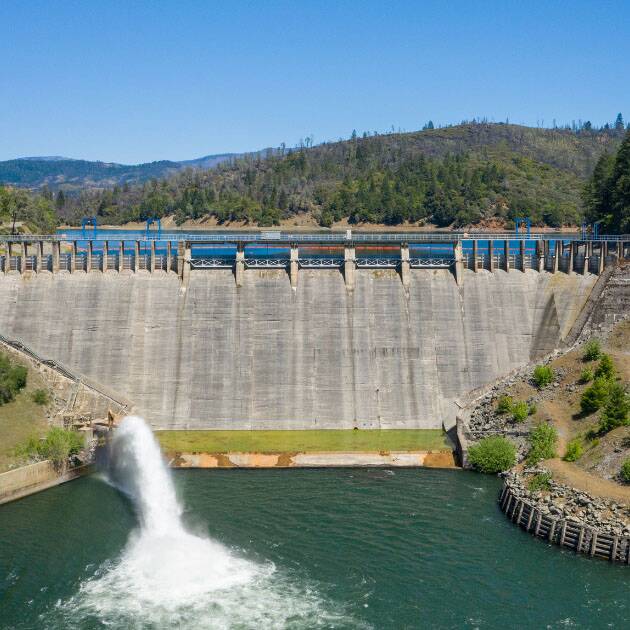Eel River Dams Headed for Removal, Water Users Support Dam-Free Diversion
In 2023, PG&E announced its plans to remove both Scott and Cape Horn dams on the Eel River as part of its license surrender and decommissioning of the Potter Valley Project. CalTrout has long advocated for removing both dams to improve salmon and steelhead populations in the Eel River by reconnecting the cold, perennial streams in the headwaters behind the dams. CalTrout has also been working with water users in the Russian River basin seeking to maintain the water supplied by a transbasin diversion tunnel. On Tuesday, March 19, 2024, partners and stakeholders met to select a design alternative for a potential future diversion from the Eel River to the Russian River that balances both needs of water users and fish.
A regional group composed of Sonoma Water, Mendocino Inland Water and Power Commission, Round Valley Indian Tribes, Humboldt County, California Department of Fish and Wildlife, Trout Unlimited, and CalTrout has been working together to support fisheries recovery in the Eel while also maintaining a winter “run-of-the-river” water diversion into the Russian River for water supply. PG&E has expressed their willingness to coordinate with the regional group as they proceed with dam decommissioning, but building a new diversion structure must not delay or impede the dam removal process. The regional group has agreed not to delay dam removal.
On Tuesday, March 19, 2024, a subset of that regional group that was formed to own and operate a new diversion facility, the Eel Russian Project Authority (ERPA), approved the design preferred by the technical advisory group and Eel River interests. That design will remove Cape Horn Dam down to the natural channel bed and use pumps on the river channel's side to pump water into the existing diversion tunnel. The design was selected because it is the superior alternative for fish passage and the lower-risk alternative for continued water supply.
Several additional details still need to be negotiated including the phasing of dam removal and construction, the rate and timing of a potential diversion that will not impede the recovery of fisheries in the Eel River, and the creation of an Eel River Recovery Fund that will support additional restoration actions in the Eel River.
In early June 2024, PG&E will submit its Final Draft License Surrender Application to federal regulators. A public comment period will begin after the Application is submitted and will last at least 30 days per federal regulations. The details of how the dams will be removed and what portions of the facilities owned by PG&E will be removed or made safe is still unknown. Dam removal could begin as early as 2028.
Conservation and commercial fishing groups have long advocated for a free-flowing Eel River. In 2023, American Rivers named the Eel one of America’s Most Endangered Rivers, citing the Potter Valley Project dams as major factors driving Chinook salmon, steelhead, and Pacific lamprey toward extinction. Removing the Eel River dams would make the Eel California’s longest free-flowing river and would reconnect native salmon and steelhead with almost 300 miles of cold-water habitat.
“Dam removal on the Eel is a crucial step towards recovering our native salmon and steelhead populations in California. We’re thrilled that all the pieces are falling into place to make this dam removal project happen,” said CalTrout Executive Director Curtis Knight.
Across the state, California Trout is committed to getting obsolete dams out and reconnecting salmon and steelhead with the clean, cold water of their native spawning and rearing habitats. We can't do it alone! Click below to join us in this important work.
Cover Photo: Scott Dam. Credit: Kyle Schwartz





